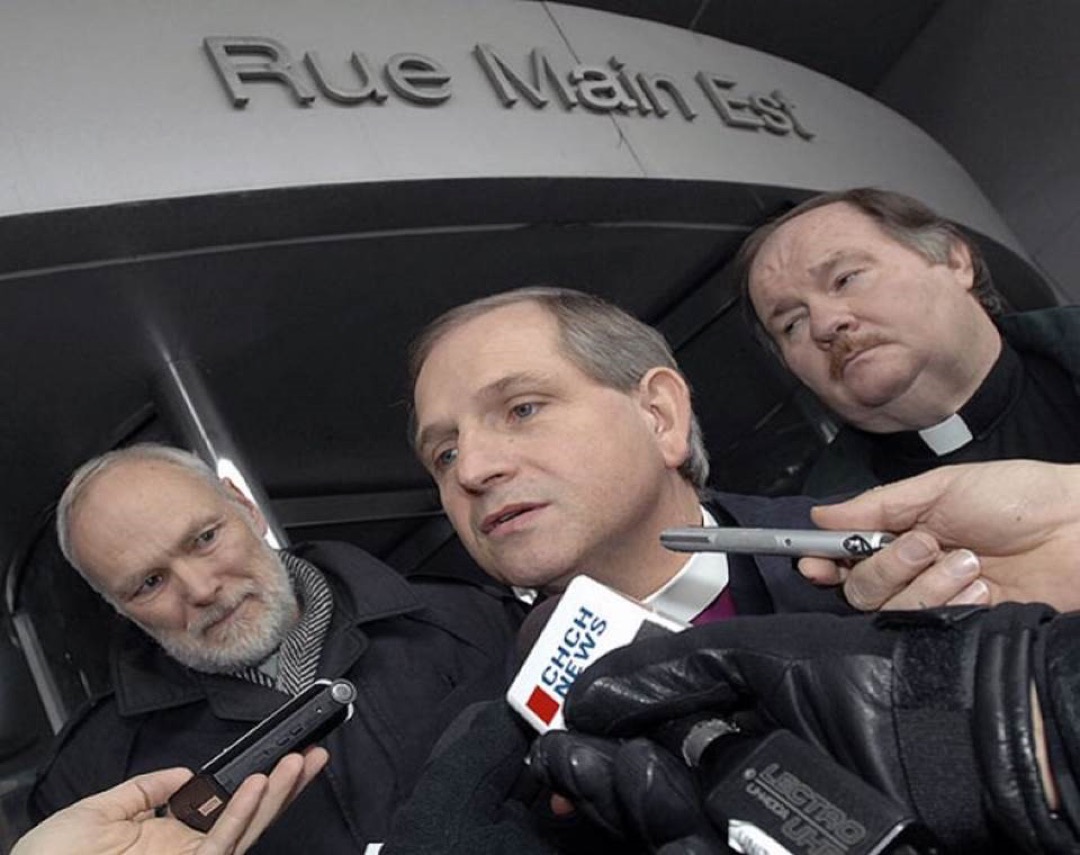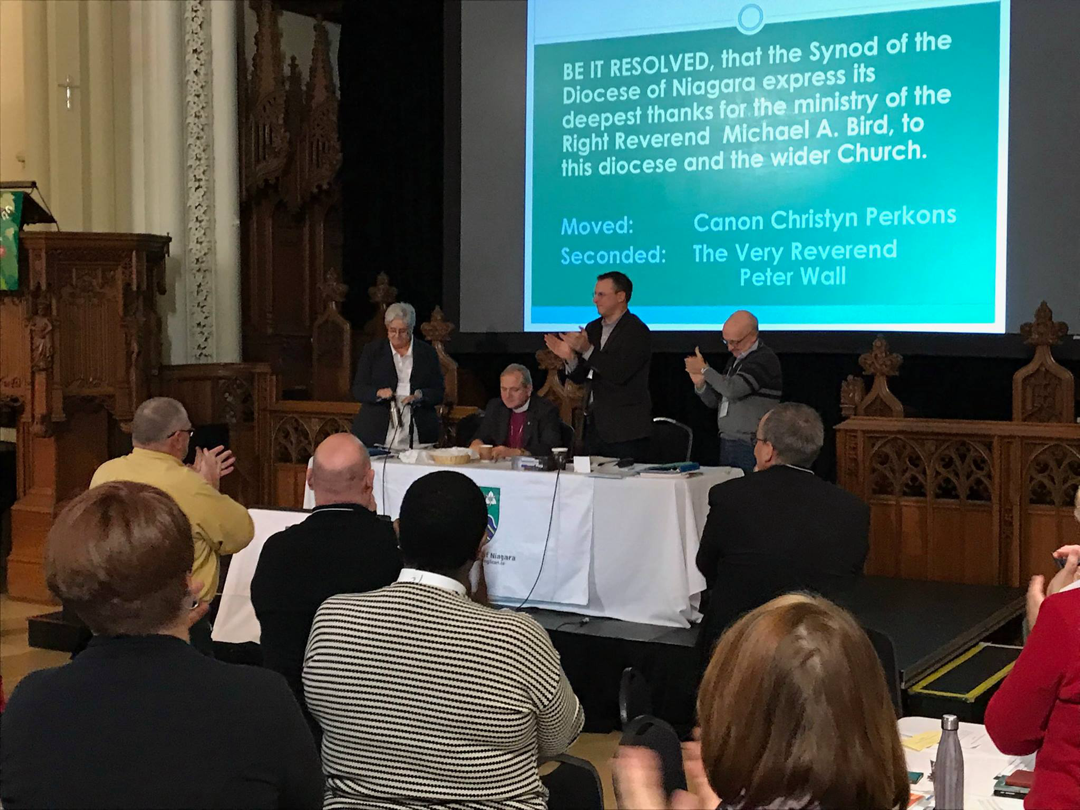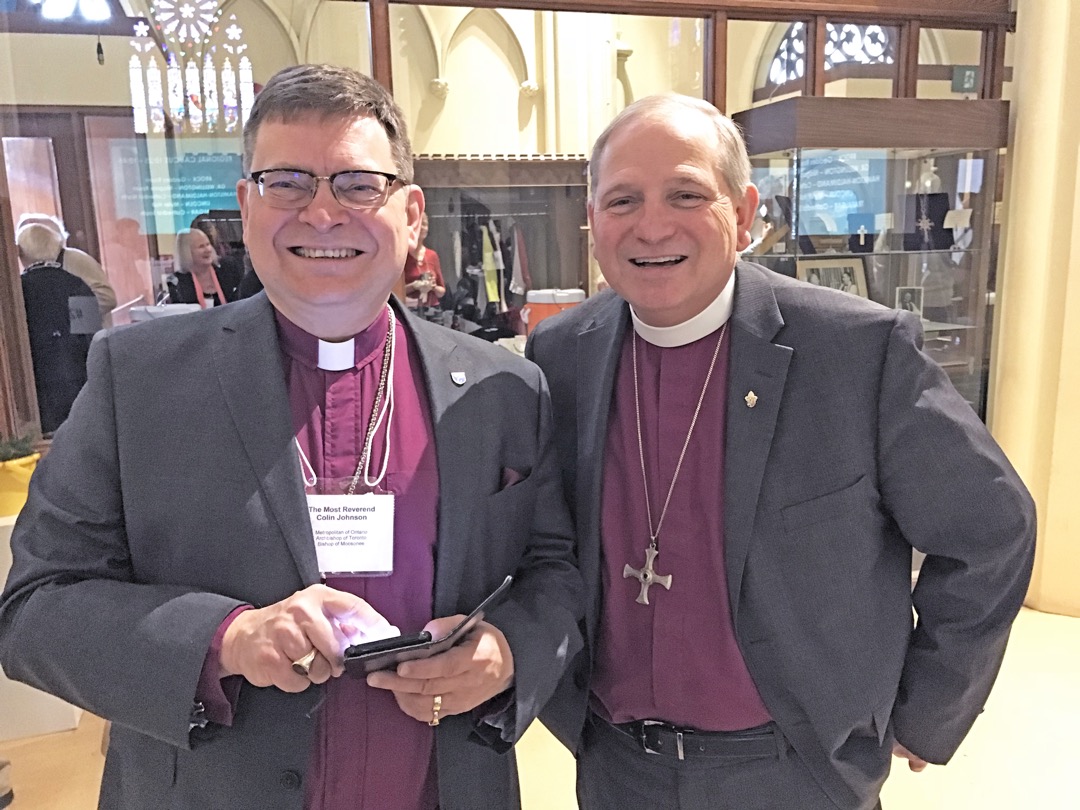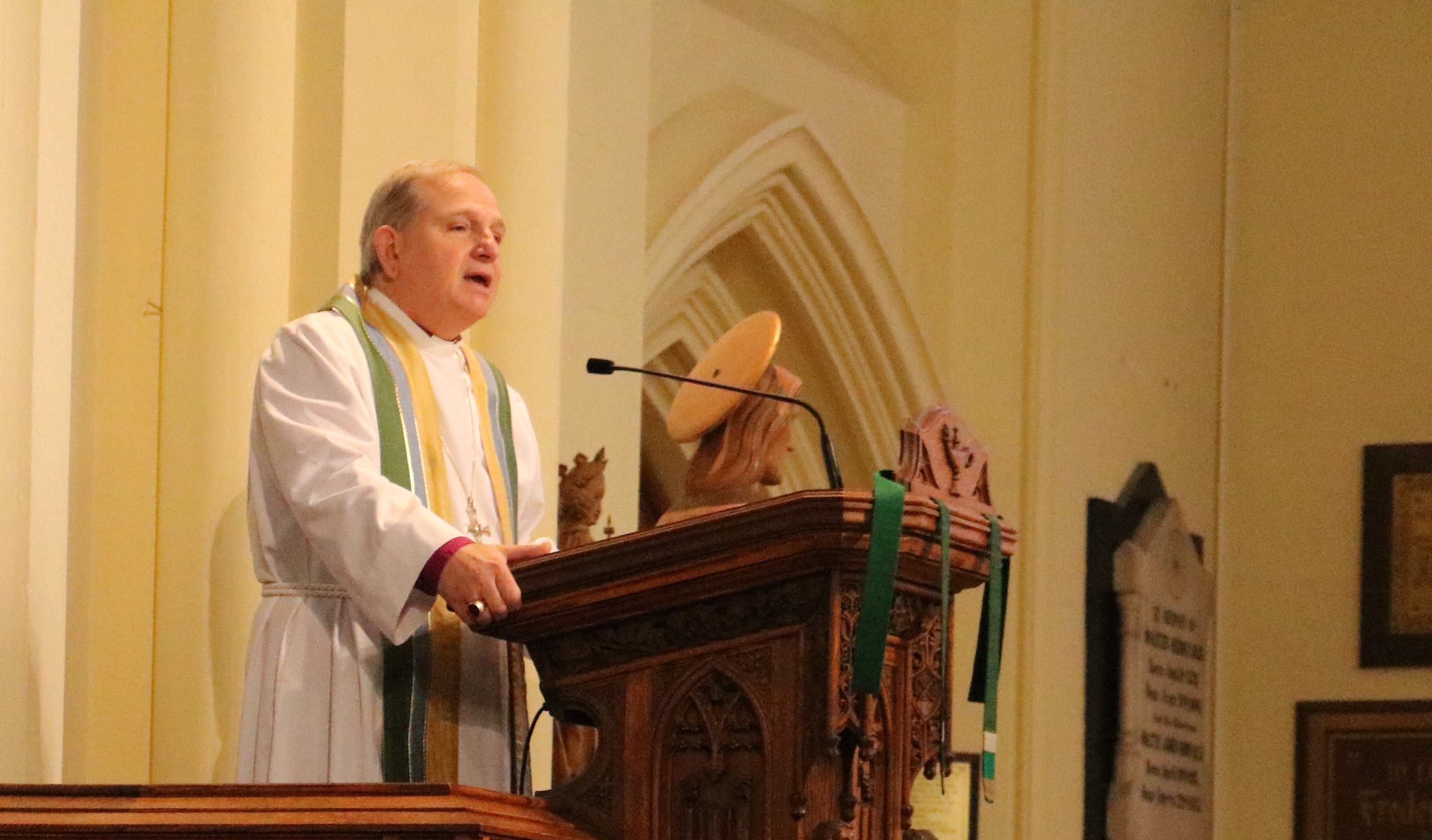“At the end of every seven years you shall grant a release … therefore, I command you, you shall open your hand wide.”
“The spirit of the Lord is upon me, because he has anointed me to bring good news to the poor. He has sent me to proclaim release to the captives and recovery of sight to the blind, to let the oppressed go free, to proclaim the year of the Lord’s favour.”
Our two readings from scripture today from the Book of Deuteronomy (15:1-18) and Luke’s Gospel (4:1-20) speak of liberation, renewal, release to those who are oppressed and held captive, and they speak of being set free.
These themes were echoed in last year’s Synod, in the material that we produced together when I asked delegates to reflect upon this question: “What should our new directions and our priorities be as a diocese for the year and years ahead; what is the Charge we are creating together?”
In the wake of the release of the document generated from the responses we received on that day, I stated: “Never in my 33 years of ordained ministry have I seen such an outpouring of passion and commitment to the proclamation of the gospel.”
This morning, as I offer you this, my last Bishop’s Charge to Synod, I want to begin by giving thanks to God for the empowered, hopeful and impassioned place we find ourselves in as a diocese today. I also indicated in that letter it was my sense as I looked to the future that we could see ourselves moving into 2018 as a Jubilee year and a year of liberation. Little did I know then that the liberation the Diocese of Niagara would be experiencing was a liberation from having me as your Bishop!
It is my hope, however, that in all the excitement and in all our attention to the details of discerning new episcopal leadership for Niagara that we not lose sight of the dreams we articulated last year of the ways in which we can continue to be set free:
- Liberating leaders and leadership in the diocese
- Liberating our lives to embrace the call to discipleship
- Liberating our ministries to move beyond our church buildings and become more visible in the public square
- Liberating our imaginations and our understanding of our calling to be the church and re-imagining our diocesan and congregational structures to help empower us for this ministry in the 21st century
- Liberating our parishes from the burden of financial restraints
- Liberating our voices to stand with and for God’s people who are bound by the forces of poverty, violence, prejudice and warfare.
God is calling us to be liberating forces in the lives of others and we are being called to set our own lives free as well!
In the Gospel lesson today Jesus recites the powerful, missional and liberating words of the prophet Isaiah that speak of a sacred calling — an anointing … “the Lord has anointed me” to bring good news to the poor, sight to those who are blind, release to captives and those who are oppressed.
Reading further we find this will be Jesus’ sacred calling as he gives back the scroll from which he has been reading and with the eyes of all in the synagogue fixed upon him, he says: “today this scripture has been fulfilled in your hearing.” It was central to Jesus’ mission and ministry and, dear friends, it is central to our ministry as well. The people in his hometown were impressed and delighted with his message up to that moment.
This sacred calling, however, has a clearly defined role of prophecy for Jesus.
In the next few lines, he takes on the more challenging role of the prophet; one who is to be inspired by the Spirit to proclaim our old messages in new ways. The prophetic voice offers both good news and words of challenge and reproach. It is a voice that is at odds with what is familiar and comfortable.
A prophet must step outside the boundaries and Jesus tells those who were gathered in the synagogue that there are times when God’s loving purposes will pass them over and embrace the foreigner and the stranger instead. It is a mission that calls them to look beyond their own limited vision, beyond their own comfort zones and their own mistaken ideas of divine blessing.
This message was not very well received. In fact, the people were filled with rage on that day and it would not be the last time that Jesus confronted this clash between human and religious self-interest and the work of God’s abundant, reconciling, transforming love in the world.
I welcome you to the 143rd Synod of the Diocese of Niagara, and our time together over the next two days will offer us an opportunity to look back, look around and look forward to the future. Not surprisingly, the task I have taken in delivering this charge is to look back over these past ten years.
On March 2, 2008 I stood outside of this Cathedral and knocked on those large wooden doors as part of the traditional ceremony for the installation and seating of the Diocesan Bishop. I am not sure if it was my imagination or not, but there did seem to be a rather long and awkward pause before the doors were opened!
In my sermon on that installation day, I spoke about the many doorways that we stood in front of as a diocese. While those doors opened inward to welcome your new bishop, I said we would then strive together to open our doors outward. Those words were very much in keeping with the words of the scripture readings today.
As I recall, it was a day of great excitement and promise, but there was also a good deal of anxiety for the future.
In the days preceding this celebration, local and national newspapers and media spoke of the conflict and division in the life of the Anglican Church. The Toronto Star had a running commentary on the status of three breakaway parishes in our diocese. On February 20, the headlines read as follows: “Breakaway Anglicans asked to hand over keys.” On February 28, it was announced that “Talks with dissident Anglican parishes end,” and then on March 3, the day after my installation, a picture appeared in newspapers across the country with the caption reading: “A House of worship divided.”

The Toronto Star article went on to say: “For Niagara Bishop Michael Bird, the court case opened on his first official day in office — he spent the day in court and talking to reporters outside — [this issue] threatens to dominate his entire time in office.”
If this were not enough, 2008 was the year that the economy crashed or at the very least took a dramatic down turn. With this loss of investment money, mounting court and legal fees and a multi-million-dollar debt we had some major and painful financial decisions to make.
One of the things I am most grateful for, as we gather here today, is that we find ourselves in a sound financial position and that having stood our ground and brought our legal proceedings to a successful conclusion, not one cent of those court costs was paid for out of the collection plates of our parishes.
We were able to position Canterbury Hills for long term sustainability, initiate a process for Cathedral Place revitalization, deploy resources for mission and ministry in a number of regions in the diocese, and bring leadership and oversight to countless building developments and property matters.
There were indeed some anxious times for us in the Diocese of Niagara and you and I had a decision to make. Would we allow these challenges and all the challenges we faced back then, to force us into the kind of paralysis that communities and institutions find themselves in from time to time? Could we liberate ourselves and set our parishes free to be open and inclusive communities? Could we open our doors and our hands wide to those who God was calling us to serve? Could we find the courage in this moment to embrace our own sacred calling and allow our lives to proclaim and embody the loving and transforming presence of the risen Christ in our midst?
Our answer to all these questions came in the form of our diocesan vision. While our difficulties back then may have threatened to dominate our entire time together, in the end nothing could have been further from the truth!
Following Christ passionately we committed ourselves to the following:
- A Continuous Culture of Innovation
- Prophetic Social Justice Making
- Outstanding Leadership for Ministry
- Life Changing Worship
- Generous Culture of Stewardship.
For many of those early years, not one of the sermons I preached failed to reference and uphold this vision of ours that evolved out of the 22 visioning meetings we held across the diocese. Much of our diocesan ministry at Cathedral Place was already well-aligned with these dreams and aspirations, and we were blessed with the arrival of several new champions to help focus on living the vision and add capacity for justice and stewardship efforts.
Teams were formed to initiate the work for each of the Vision’s areas of focus and in later years I would appoint two new Archdeacons — one for leadership development and one to help move us toward a renewed and restored life with the Indigenous Peoples in Canada.
In partnership with the clergy and lay leaders of the diocese, it has been wonderful to behold how this template and this beacon of hope and promise has renewed and transformed us as God’s people in Niagara.

One of the analogies I used on a number occasions in my preaching was to compare the people of the diocese to passengers on an airplane. I have traveled a great deal in my work as your bishop and I suppose I had airports and air travel on the brain. I told parishioners that we were like a group of passengers on a 787 Dreamliner, and that we had already left the departure gate with our flight plan in hand. The flight plan was our new Diocesan Vision. In order to take off, however, we were going to need to lighten the load and we were going to need to build a longer runway.
One person really resonated with this analogy; it was not surprising given he was a pilot himself and he sent me an actual copy of a flight plan that he had recently filed and I still have that piece of paper to this day.
This morning, I want to pick up on that analogy once again and say to you: “Dear people of the Diocese of Niagara; this is your pilot speaking … we have achieved lift off!!!” It was not without many challenges and sacrifices and we have a great deal of altitude yet to attain, but I believe we are in the air and on our way to an exciting and glorious future.
Here is what our diocese in flight looks like to me from my vantage point in the air traffic control booth:
- Creative worship teams
- Canterbury Hills
- A safe church for all
- Canadian and African Bishops in Dialogue
- Mission to Seafarers
- Hands Across Niagara projects
- Living wages
- St. Matthew’s House
- Strong PWRDF support
- Community lunches and dinners
- Bishop’s Diploma Course
- Extraordinary Pastoral Care
- Global Outreach
- HARRRP
- An inclusive church
- The Niagara Youth Conference
- Food and Hygiene banks
- Green Parishes
- Youth Synod in Action
- KAIROS Blanket Exercises
- Community gardens
- Advocacy to eliminate poverty
- University Chaplaincies
- Balanced budgets
- Migrant Farm Workers Ministry
- Phenomenal Choral Music
- Messy Church
- Open Doors
- aWay
- WOW grants
- Celtic and Taizé worship
- Out of the Cold
- Ride for Refuge
- Cathedral Place Revitalization
- Ecumenical partnerships
- Participation at UNCSW
- Faithful discipleship
- Bishop’s Company
- Bless the City
- Over 200 sponsored refugees
- Equal marriage
- Community partnerships
- Commitment to Truth and Reconciliation
- Investments aligned with mission
- Holy Conversations
- Bishop’s Lenten Book Groups
- Congregational partnerships
- Deep relationships with Cuba and Ghana.
It is the result of dedicated and inspiring leadership from our parish clergy and lay leaders, our chancellors and solicitor, Synod Office management team and staff, Archdeacons and Regional Deans, Synod delegates and Synod Council members, Committee members, partners in ministry and countless others who have borne faithful witness to our Lord’s sacred calling and mission that comes from our gospel reading today. Jesus’ words find profound meaning once again as we reflect upon all that has transpired: “today this scripture has been fulfilled in your hearing.”
Let us give thanks to God for this remarkable journey that we have taken together; one that has changed our lives and has renewed and transformed us as God’s people in Niagara.



Preaching as Spiritual Discipline: A Modern Challenge